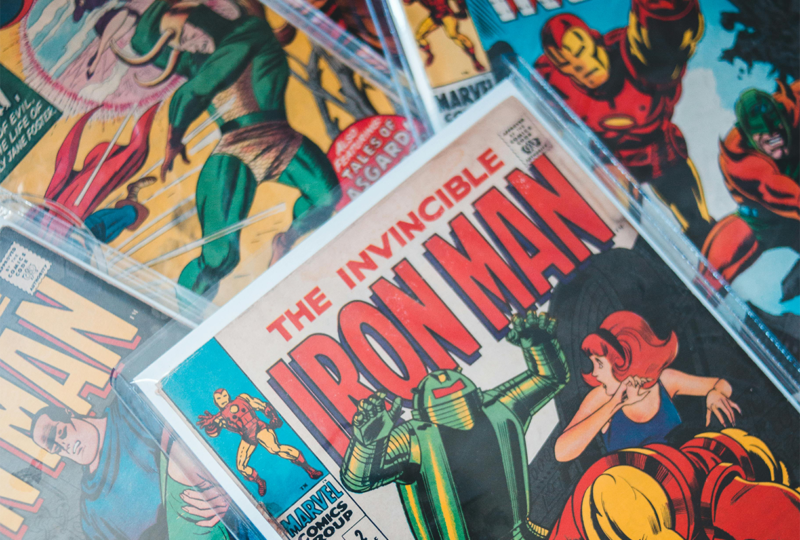A Journey Through the Marvel Cinematic Universe: From Iron Man to Endgame
October 16, 2024

The Marvel Cinematic Universe (MCU) has become a cultural juggernaut, weaving together an intricate tapestry of stories and characters over more than a decade. Beginning with Iron Man in 2008 and culminating in Avengers: Endgame in 2019, the MCU has redefined blockbuster filmmaking and serialized storytelling. This article takes you on a journey through the MCU, exploring its development, key films, character arcs, and the factors that contributed to its unprecedented success.
The Genesis of the MCU
Marvel Studios’ Bold Vision
- Financial Independence: Marvel Studios decided to produce films independently to have creative control.
- Character Licensing: With popular characters like Spider-Man licensed elsewhere, Marvel focused on lesser-known heroes.
Iron Man (2008)
- Casting Robert Downey Jr.: A pivotal decision that brought charisma and depth to Tony Stark.
- Post-Credits Scene: Introduction of Nick Fury hinted at a larger universe, igniting fan excitement.
Phase One: Assembling the Avengers
Establishing Core Characters
- The Incredible Hulk (2008): Explored Bruce Banner’s struggle with his alter ego.
- Thor (2011): Introduced cosmic elements and the realm of Asgard.
- Captain America: The First Avenger (2011): Set during WWII, providing historical context.
The Avengers (2012)
- Culmination of Phase One: Brought together individual heroes in a team-up event.
- Box Office Success: Grossed over $1.5 billion, proving the viability of a shared universe.
Phase Two: Expanding the Universe
New Heroes and Settings
- Guardians of the Galaxy (2014): Introduced audiences to new cosmic characters and humor.
- Ant-Man (2015): Combined heist genre elements with superhero action.
Character Development
- Captain America: The Winter Soldier (2014): Explored political themes and personal conflicts.
- Thor: The Dark World (2013): Delved deeper into inter-realm politics and relationships.
Building Towards Conflict
- Avengers: Age of Ultron (2015): Introduced new characters like Scarlet Witch and Vision.
- Themes of Responsibility: Heroes grappled with the consequences of their actions.
Phase Three: The Infinity Saga
Introducing New Faces
- Doctor Strange (2016): Brought magic and mysticism into the MCU.
- Black Panther (2018): Celebrated African culture and became a cultural milestone.
Internal Struggles
- Captain America: Civil War (2016): Heroes divided over ideological differences.
- Character Dynamics: Explored complex relationships and moral dilemmas.
The Climax
- Avengers: Infinity War (2018): Heroes united against Thanos, culminating in a shocking ending.
- Avengers: Endgame (2019): Provided closure to long-standing story arcs and character journeys.
Key Elements of Success
Interconnected Storytelling
- Shared Universe: Continuity across films created a cohesive narrative.
- Easter Eggs and References: Rewarded attentive viewers and encouraged fan theories.
Character Development
- Relatable Heroes: Flawed characters with personal struggles resonated with audiences.
- Evolution Over Time: Characters grew and changed, adding depth to the stories.
Balancing Tone
- Humor and Heart: Films blended action with comedy and emotional moments.
- Genre Fusion: Incorporated elements of spy thrillers, space operas, and heist films.
Visual Effects and Action
- High Production Values: State-of-the-art CGI and practical effects.
- Memorable Action Sequences: Innovative fight scenes and set pieces.
Cultural Impact
Diversity and Representation
- Black Panther: Significant for its predominantly Black cast and crew.
- Inclusive Casting: Efforts to reflect a diverse audience.
Fan Engagement
- Comic-Con Presence: Major announcements and trailers generated hype.
- Social Media: Active engagement with fans through platforms and campaigns.
Challenges and Criticisms
Superhero Fatigue
- Market Saturation: Concerns over the abundance of superhero films.
- Formulaic Risks: Critiques about predictable plot structures.
Villain Development
- Early Criticisms: Villains perceived as underdeveloped or one-dimensional.
- Improved Antagonists: Characters like Thanos and Killmonger added complexity.
The Future of the MCU
Phase Four and Beyond
- New Stories: Introduction of characters like Shang-Chi and Eternals.
- Disney+ Series: Expansion into television with shows like WandaVision and Loki.
Multiverse Exploration
- Alternate Realities: Concepts introduced in Doctor Strange and Spider-Man: No Way Home.
- Creative Opportunities: Potential for crossovers and revisiting legacy characters.
Tips for Newcomers
Viewing Order
- Chronological vs. Release Order: Starting with Iron Man and following release dates is recommended.
- Key Films: Focus on essential movies that advance the main storyline if time is limited.
Engage with the Community
- Fan Theories: Exploring online discussions can enhance understanding.
- Comic Books: Reading source material offers deeper insights.
Conclusion
The Marvel Cinematic Universe’s journey from Iron Man to Endgame represents a landmark achievement in filmmaking. By weaving together diverse characters and stories into a unified narrative, Marvel Studios created an immersive world that captivated audiences worldwide. As the MCU continues to evolve, it remains a testament to the power of ambitious storytelling and the enduring appeal of superheroes.







